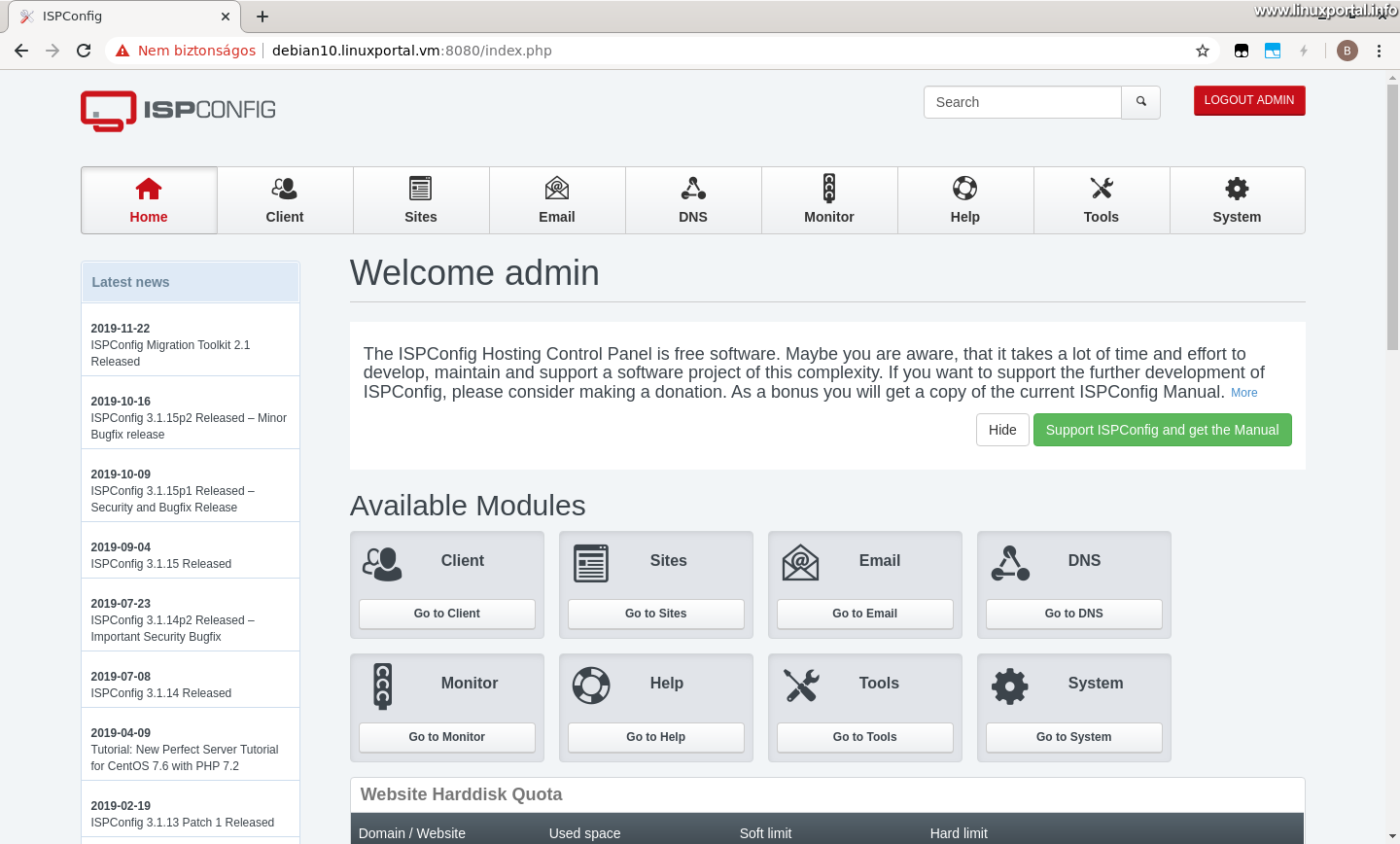
How to configure custom PHP versions on our ISPConfig server Linux Portal
This feature works with PHP-FPM (starting with PHP 5.3) and FastCGI (all PHP 5.x versions). This tutorial shows how to build PHP 5.3 and PHP 5.4 as a PHP-FPM and a FastCGI version on a CentOS 6.3 server. These PHP versions can be used together with the default PHP (installed through yum) in ISPConfig.More…

How to install ISPConfig 3 on CentOS 7 and fix related errors
The easiest way to install ISPConfig is to use the Autoinstaller: Perfect Server Automated ISPConfig 3 Installation on Debian 10 to Debian 12, Ubuntu 22.04 and Ubuntu 20.04. If you prefer the manual installation, have a look at the installation guides below. The Perfect Server - Debian 12 (Bookworm) with Apache, BIND, Dovecot, PureFTPD and.

ISPConfig on Twitter "Install Ioncube Loader For All PHP Modes used
Fast tutorial how to install into ISPConfig 3.1 Additional PHP Versions without compiling from sources. Note: There is official tutorial on howtoforge.com but from my point of view is so complicated and each time you need to compile new PHP version or additional PHP extensions. That's the reason why repository is the best choice and super easy to setup in this tutorial instead of compiling.
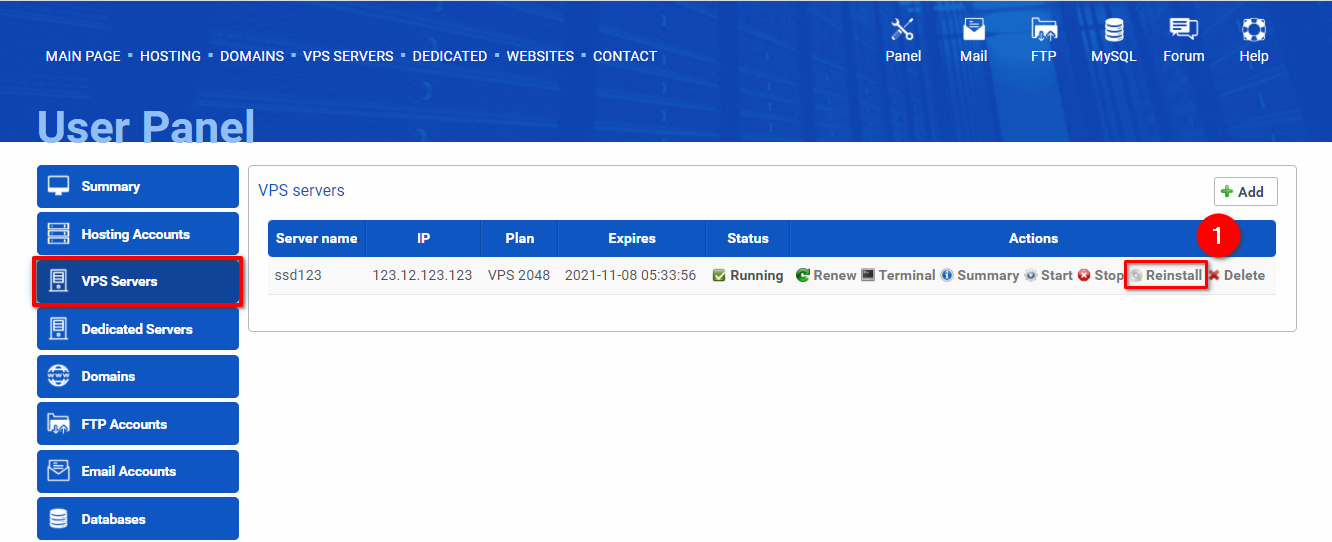
How to install and access Webmin?
ISPConfig 3.2.9 Released. This version implements new features such as support for Ubuntu 22.04 and general support for PHP 8 and 8.1 as default PHP versions. Also, two-factor authentication is now available and several minor bugs found in the previous version have been fixed.

ISPConfig 3.1 Beta released for testing ISPConfig
Download the latest ISPConfig version from ispconfig.org. ISPConfig is released as Open Source software under the BSD license. Download ISPConfig 3.2.11p1. Current version: 3.2.11p1 Here you find a list of old ISPConfig releases. Update Instructions. To install the latest ISPConfig update, run this command on the shell of the server as root user:

How to install PHP 7.x version in ISPConfig? YouTube
Never alter the default version of an OS. All packages of the OS depend on that version and ISPConfig does that too. Just add newer and older PHP versions as additional PHP versions and set the default version back to the original version using update-alternatives command as mentioned in the guide.

What Is ISPConfig Hosting And What Should You Look For In A Host? The
This tutorial shows how to install PHP 7.x as a PHP-FPM and a FastCGI version on a Debian Jessie or Stretch server from the Debian PHP Package maintainers site directly. Read more: How to install PHP 7.x as PHP-FPM & FastCGI for ISPConfig 3.1 with apt on Debian 8 and 9.

Install Multiple Version PHP (FastCGI & PHPFPM) on ISPConfig 3.1
In ISPConfig 3, you can configure the new PHP versions under System > Additional PHP Versions > Add new PHP version. Add the distribution's default PHP version. First of all you have to add a new version for the already installed PHP version. The default version depends on the release you are on: Debian 9: PHP 7.0 Debian 10: PHP 7.3 Debian 11.

Luckie Shared Thought » Blog Archive » How To Use / Add Multiple PHP
In ISPConfig 3.1, you can configure the new PHP version under System > Additional PHP Versions. On the Name tab, you just fill in a name for the PHP version (e.g. PHP 7.1) - this PHP version will be listed under this name in the website settings in ISPConfig: Go to the FastCGI Settings tab and fill out the fields as follows:

How to configure custom PHP versions on our ISPConfig server Linux Portal
Create new PHP version in ISPConfig. Once the ISPConfig is available on the server, log in as Admin. Then navigate to the System main menu, followed by the Additional PHP Versions menu. Next, click Add new PHP version to bring up the new PHP form. According to our Support Engineers, this option allows you to create and configure PHP versions as.

Ispconfig comment changer la version de PHP sur un site web crée sur
Want to add additional additional PHP versions to ISPConfig on Centos 7? Read to find out how our Support Engineers get this done! One of our clients wanted to add the new PHP version to their ISPConfig control panel. Fortunately, with ISPconfig 3, our Server Management team was able to help them out.
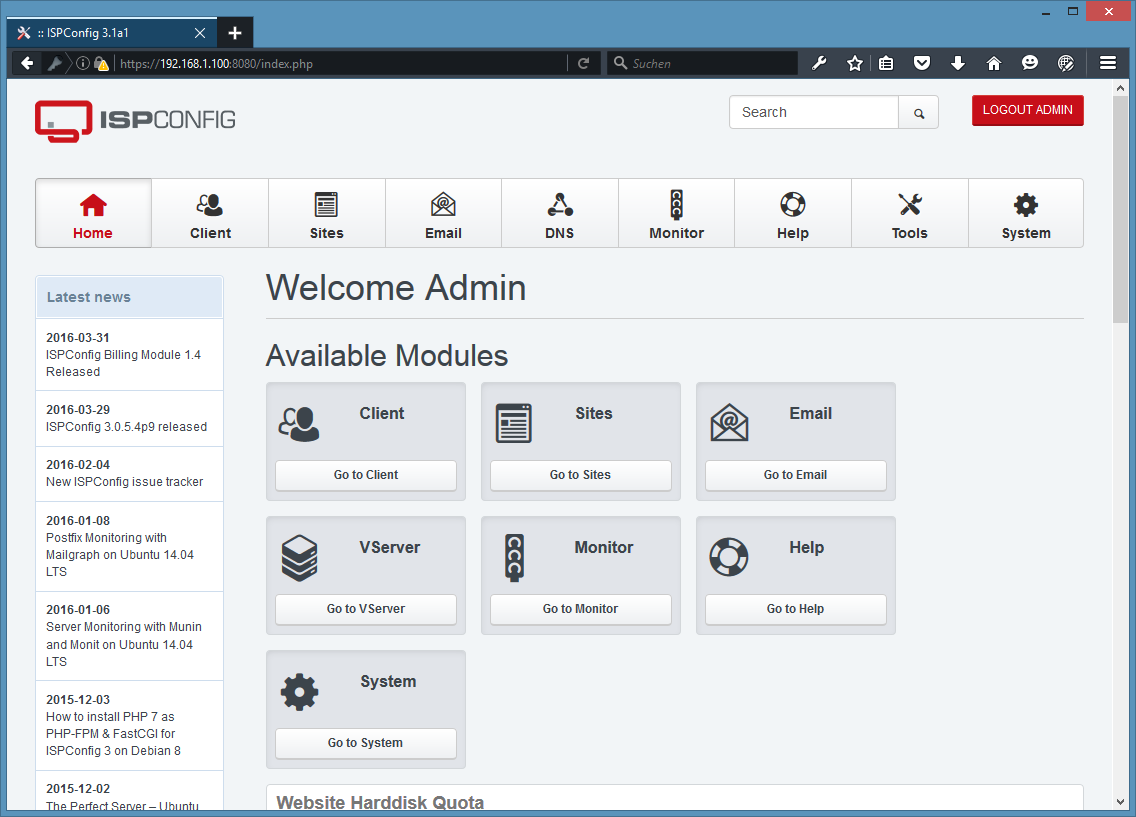
ISPConfig 3.1 Beta released for testing ISPConfig
In ISPConfig 3, you can configure the new PHP versions under System > Additional PHP Versions > Add new PHP version. Add the distribution's default PHP version. First of all you have to add a new version for the already installed PHP version. The default version depends on the release you are on: Ubuntu 18.04: PHP 7.2 Ubuntu 20.04: PHP 7.4.

Set Up Web Hosting using ISPConfig3 on Ubuntu 18.04 TechSupport
Use firewalld to manage your firewall. ISPConfig 3 panel to manage virtual hosts, databases, and PHP versions. Conventions / Sample data: Server hostname is test.hexblot.com. MariaDB root password will be testerson. FPM port for PHP5.4 will be 9000. FPM port for PHP5.6 will be 9006. FPM port for PHP7.0 will be 9007.
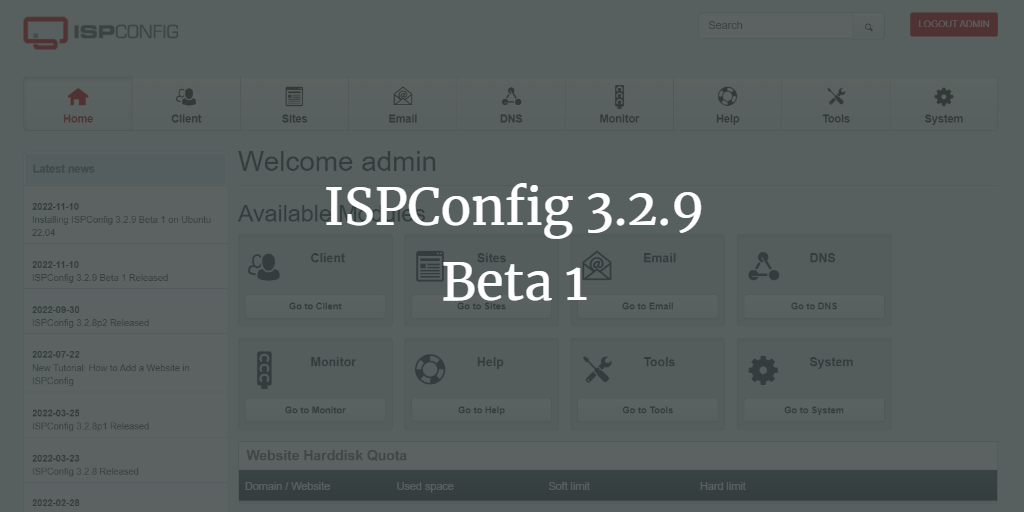
Installing ISPConfig 3.2.9 Beta 1 on Ubuntu 22.04 ISPConfig
The PHP version can be selected in the ISPConfig 3 website settings for each site individually. This feature works with PHP-FPM and FastCGI. This tutorial shows how to build the new PHP 7 as a PHP-FPM and a FastCGI version on a Debian Jessie server. These PHP 7 builds include Zend OPcache. The final version of PHP 7 is available for download on.

ISPConfig Alternatives and Similar Software
Viewed 6k times. Part of PHP Collective. 2. I have a server with ISPConfig with the version of PHP 5.6 by default. I installed in addition PHP 7 and defined my site with PHP 7 except that when I do a composer update or install I need the version of PHP 7.
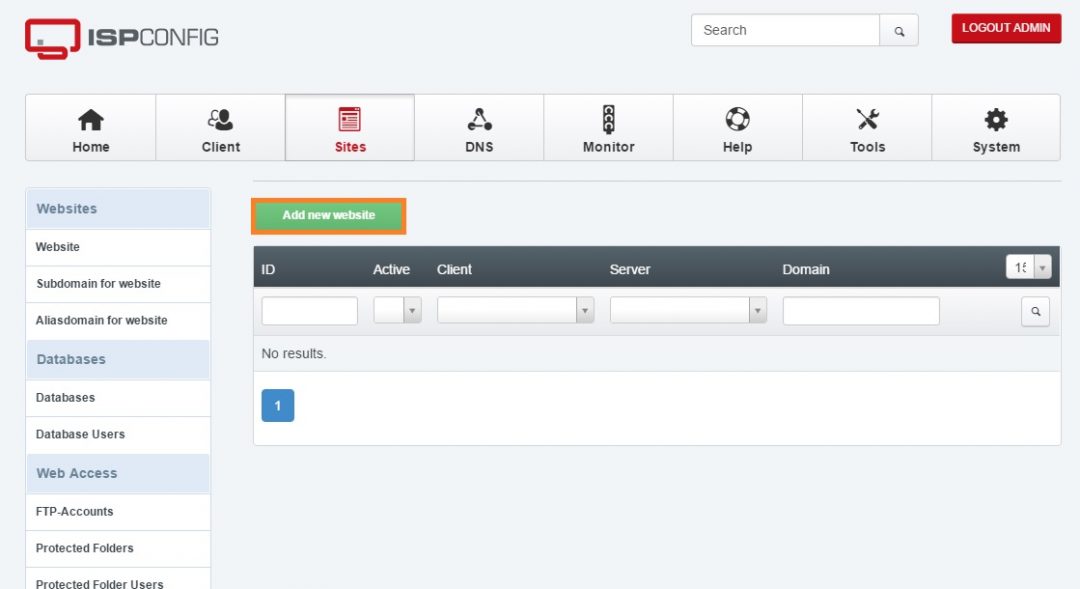
Installer ISPConfig 3.1 avec NGINX, MariaDB et PHP 7 sous Debian 8
Since ISPConfig 3.0.5, it is possible to use multiple PHP versions on one server and select the optimal PHP version for a website. This feature works with PHP-FPM (starting with PHP 5.3) and FastCGI (all PHP 5.x versions). This tutorial shows how to build PHP 5.3 and PHP 5.4 as a PHP-FPM and a FastCGI version on an Ubuntu 12.04 server.